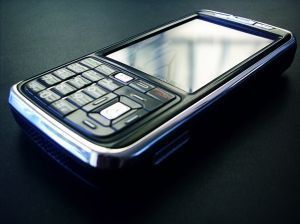As technology has improved over the past few decades, cell phones have only gotten better and better.Though most people do not stop to consider the idea, it is still an amazing feat even today that what was once only an idea presented in movies and novels, has now become our number one modern-day communication device. Many people have even disconnected their landline telephones and replaced them with cell phones. With the ability to make phone calls, send and receive text messages and pictures, and even access the Internet, cell phones have become a permanent fixture in our society. Have you ever wondered, however, how cell phones actually work? In this article, we will explore the many aspects of communication that make cell phones operate and even define several terms that you may have come across when dealing with cell phones that you previously did not understand.
Server
The first piece of technology that makes cell phones work is the series of servers that cell phone companies setup and maintain to store data. All of your cell phone records as well as the actual information that makes up phone calls, text messages, pictures, and Internet access is stored within a server much like the hard drive of the computer that you are accessing to read this article. Without this stored data, cell phone communication would be impossible.
Tower
The next piece of technology that is essential to cell phone communication is the tower. Cell phone companies build thousands of towers around a specific area in order to create a network in which cell phone customers can communicate within. A tower is both a transmitter that passes information from the server to your cell phone as well as a receiver that can pick up information that your cell phone broadcasts. Without the tower, cell phone users would not be able to access the server and it would therefore be impossible to communicate via cell phones.
Cell Phone
The final and most widely used piece of technology involved in cell phone communication is the cell phone itself. While servers and towers are key to store and transfer information, it is the cell phone itself that serves as the creation point of that information. When you dial a number, send a text message, or attempt to access the Internet, your cell phone interprets that data and broadcasts it as a radio signal that the tower can pick up, relay to the server, retrieve the information back from the server, and broadcast out to the recipient's cell phone.
PCS
PCS is a term that applies to the radio broadcasting range of 1850-1900 Mhz, which all cell phones use to communicate with each other. While PCS may not hold any personal significance to you, PCS is a rather important feature of cell phone communication as it allows for cell phones to transmit and receive information wirelessly without other devices causing interference with the broadcast. The majority of cell phone services in the United States currently use PCS as it is necessary for cell phones to communicate with other wireless networks.
GSM
GSM stands for Global System for Mobile Communications and is more popular in Europe and other countries than in the United States. You can recognize GSM models by the SIM card located within the phone. SIM cards allow you to store your phone's personal data such as your contact list, pictures, notes, calendar, and any other personal data that you may have and then transfer that information to a new phone by simply putting the SIM card in the new phone. Only GSM phones have this feature.
CDMA
CDMA stands for Code Division Multiple Access and refers to the way that the radio signal that is broadcasted and received by your cell phone is handled. In CDMA, each user is separated by a different spectrum of the radio broadcasting range and is protected by a code. This method ensures that the cell phone call does not encounter interference, which is the leading cause of dropped calls and bad signals.
TDMA
TDMA stands for Time Division Multiple Access which is very similar to CDMA. Like CDMA, TDMA also separates users by spectrums but instead of protecting the signal by a code, TDMA uses a time-based algorithm to process calls. Basically, TDMA takes your call or text and puts it in a line behind a few other people who are also transmitting data, and, when the other users' data has been transferred, your data will also be sent. This method allows for companies to take on a lot more customers and expand their network by processing multiple users per spectrum.




Richard Garis
Why would TACS in San Antonio, TX (210) 622-2554 be calling a cell phone in North Carolina?